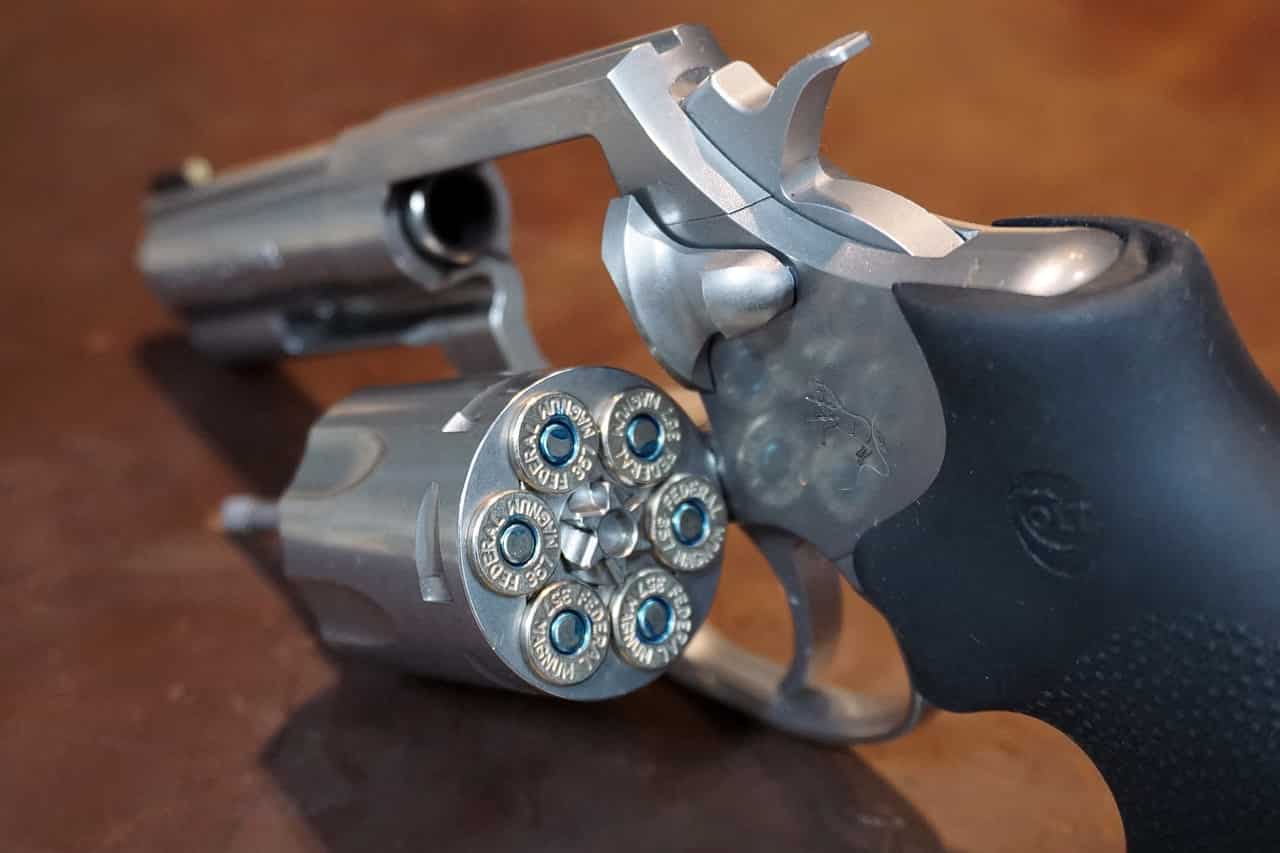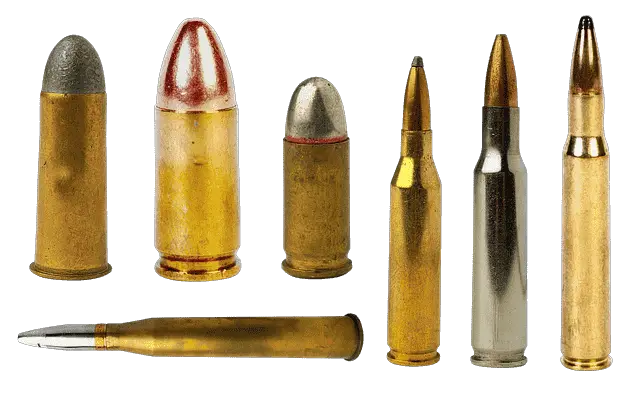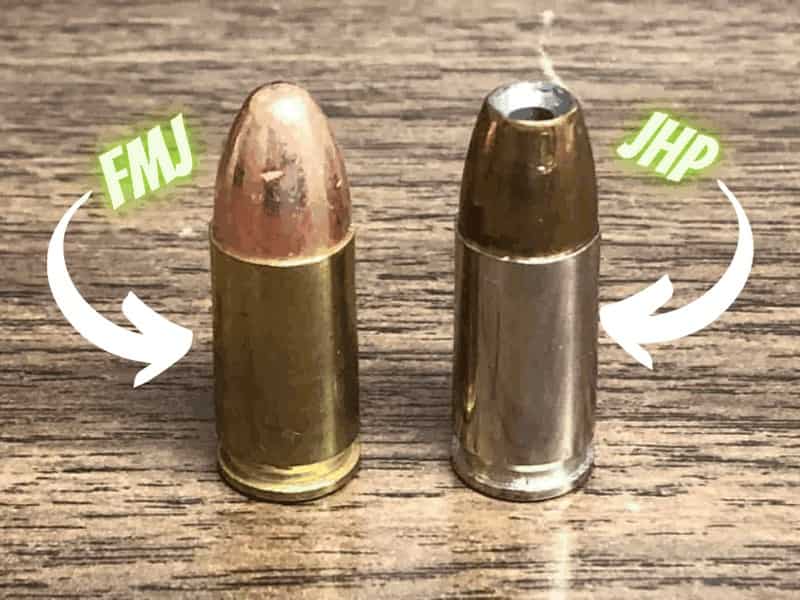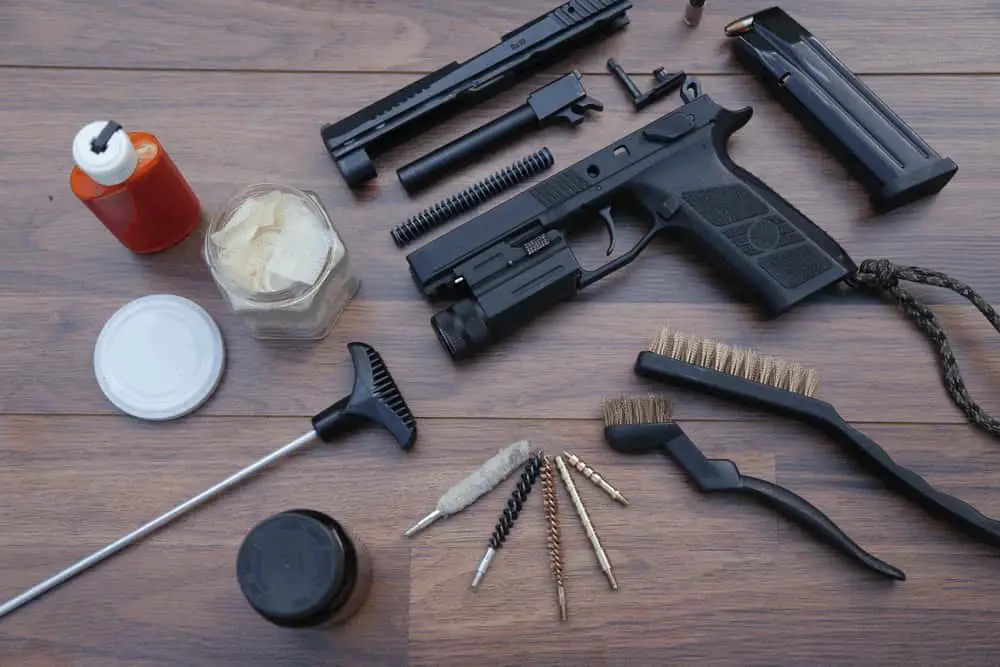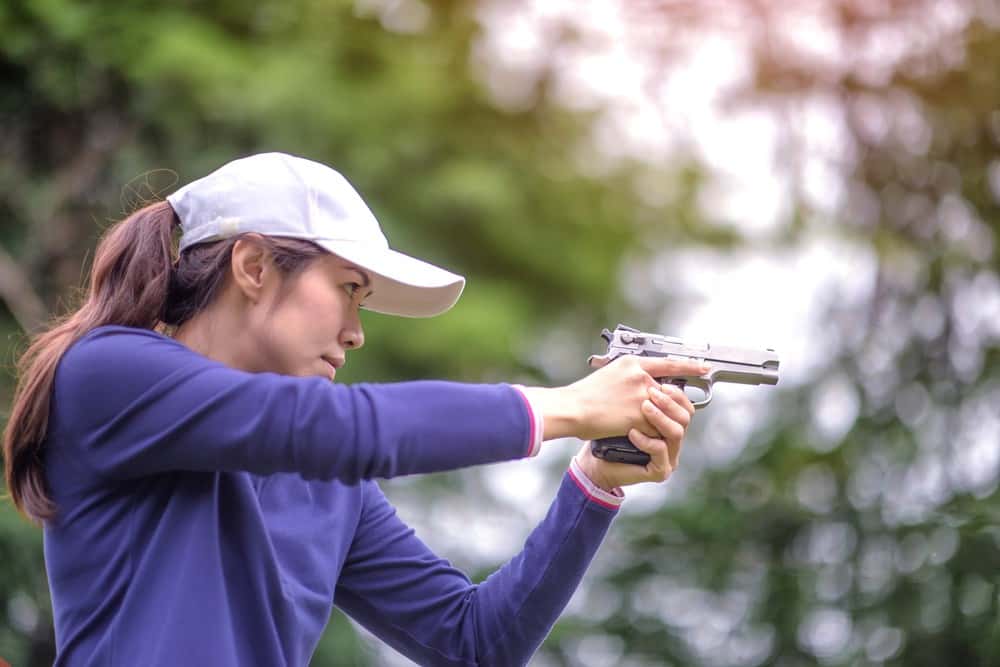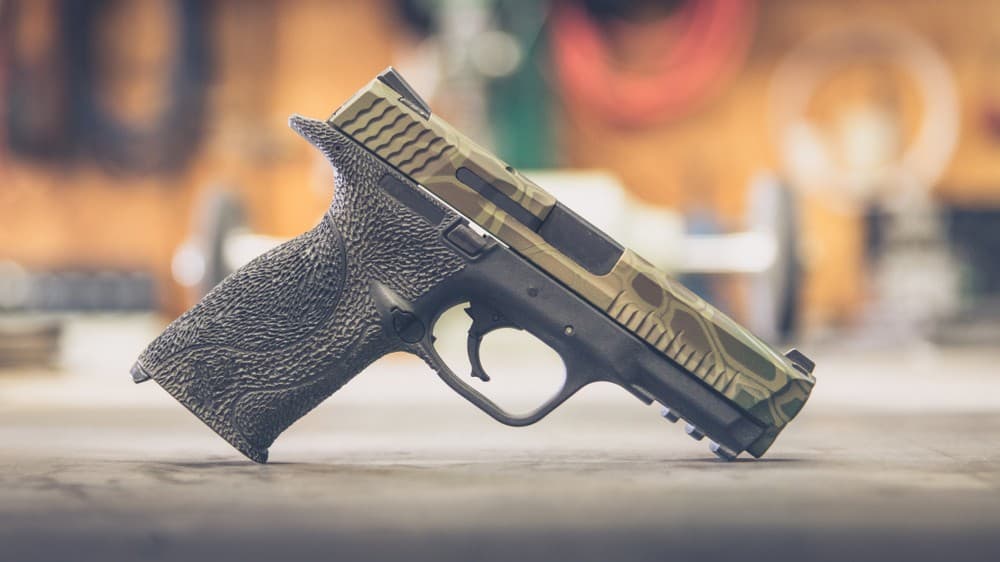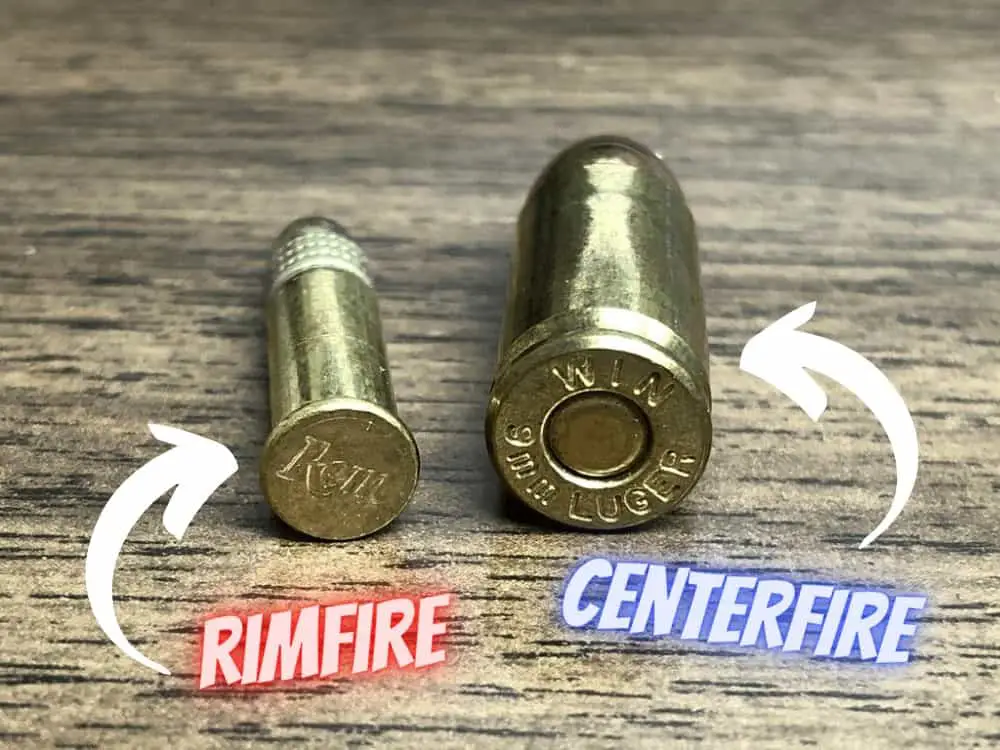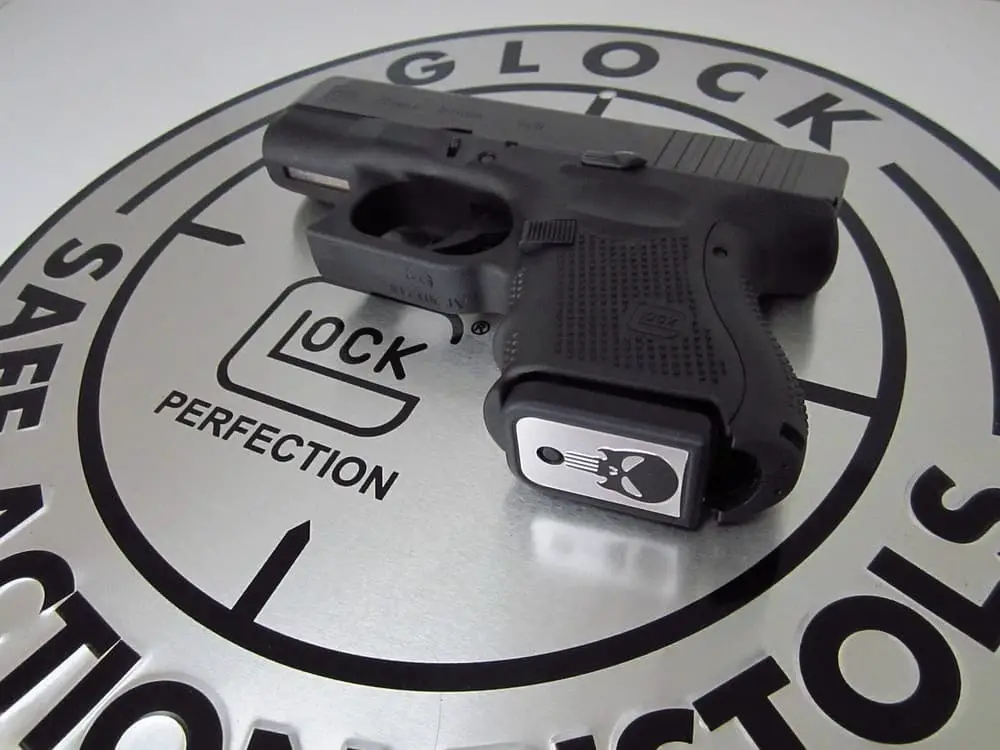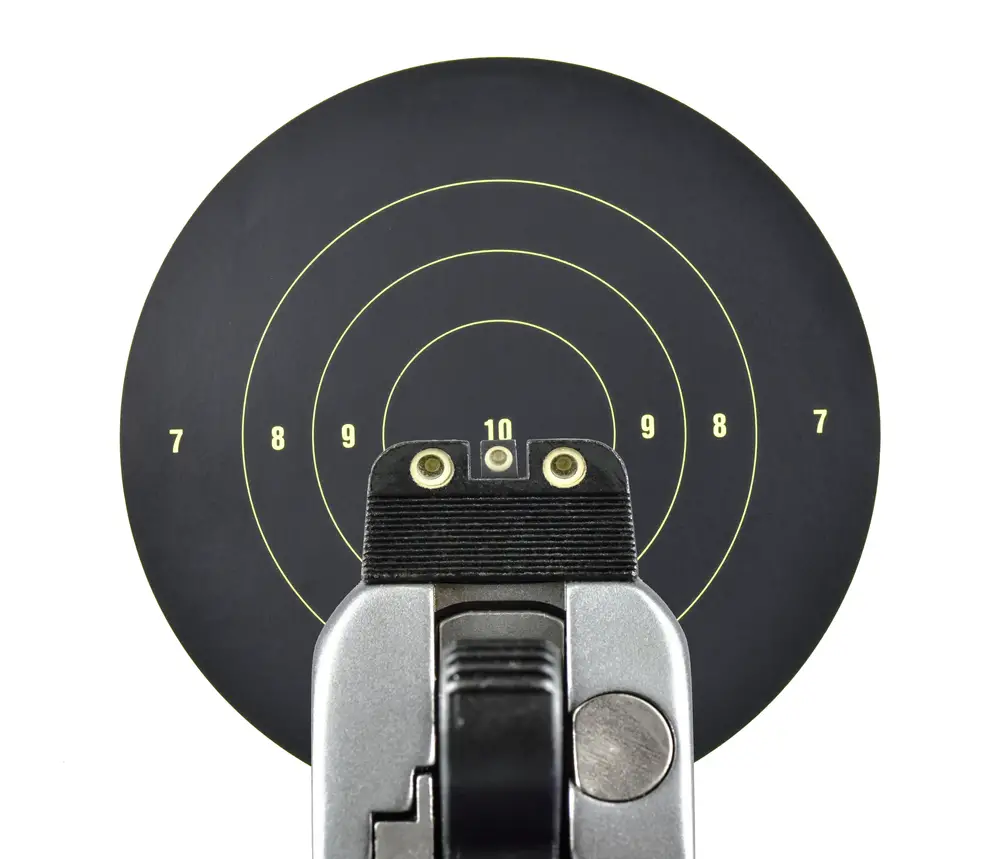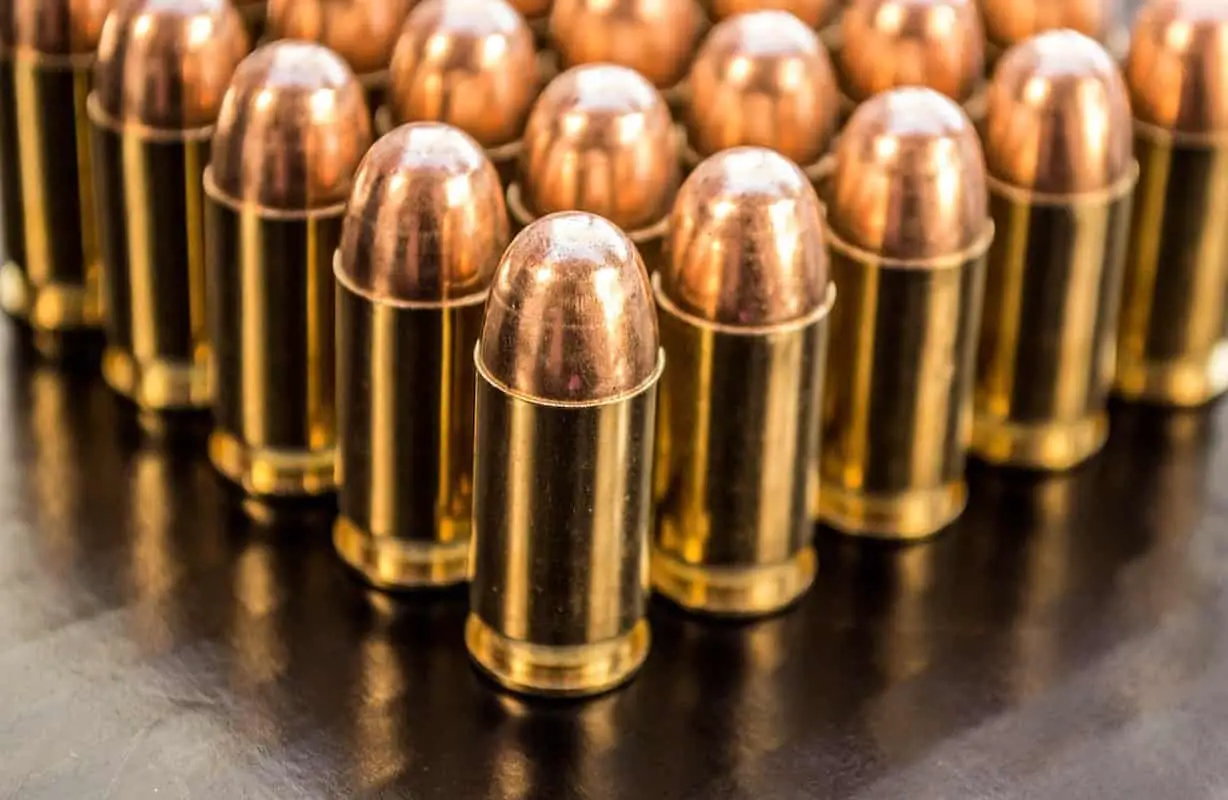Defining the Most Open Shotgun Choke
The cylinder choke is the most unrestricted and open choke, providing no constriction at the muzzle end of the barrel. The skeet choke follows closely behind with minimal constriction, making both ideal for close-range shooting where wide shot patterns are needed.
What Makes a Choke Open or Tight
The amount of constriction at the muzzle determines whether a choke is open or tight. Open chokes have little to no constriction, allowing pellets to spread quickly after leaving the barrel.
A shotgun choke works by narrowing the barrel’s diameter at the muzzle end. The less constriction present, the more open the choke becomes. This creates a wider shot pattern that covers more area.
Constriction levels range from zero constriction in cylinder chokes to significant narrowing in full chokes. Open chokes typically measure between 0.000 to 0.010 inches of constriction.
The bore diameter stays consistent throughout most of the barrel. Only the final few inches at the muzzle change to create the choke effect.
Looser chokes allow pellets to exit without being squeezed together. This results in faster spread and wider coverage at shorter distances.
Cylinder Choke Explained
The cylinder choke provides no constriction at the muzzle, allowing the shot to spread widely and quickly after leaving the barrel. This makes it the most open shotgun choke available to hunters and shooters.
The cylinder choke maintains the same diameter as the shotgun barrel’s interior. No narrowing occurs at the muzzle end, creating maximum spread potential.
Key characteristics include:
- Zero constriction (0.000 inches)
- Widest shot pattern
- Best for ranges under 25 yards
- Ideal for fast-moving targets
The cylinder choke is particularly effective for home defense situations due to its wide coverage area. It requires less precise aiming in high-stress scenarios.
Pellets begin spreading immediately upon exiting the barrel. This creates maximum coverage for close-range shooting applications.
Skeet Choke Characteristics
The skeet choke provides minimal constriction, typically measuring 0.005 inches. This makes it the second most open choke after the cylinder.
Skeet chokes were designed specifically for skeet shooting sports. They create a slightly tighter pattern than cylinder chokes while maintaining good spread for close targets.
Performance features:
- Light constriction (0.005 inches)
- Effective range of 25-30 yards
- Balanced spread and density
- Popular for sporting clays
The skeet choke offers more pellet density than a cylinder while still providing generous coverage. This balance makes it versatile for various shooting situations.
Many shooters prefer skeet chokes for upland bird hunting. The slight constriction helps maintain pattern integrity without sacrificing too much spread.
How Shotgun Chokes Influence Shot Spread
Shotgun chokes directly control how pellets spread after leaving the barrel, with different choke types creating distinct shot patterns that affect accuracy at various distances. Open chokes like cylinder create wide patterns for close targets, while tighter chokes concentrate pellets for longer shots.
Shot Patterns and Choke Types
A shotgun choke is a tapered constriction at the muzzle end that influences the spread of shot. Each choke type creates a specific shot pattern that determines how pellets spread downrange.
The cylinder choke produces the widest shot pattern. It has no constriction, allowing pellets to spread naturally as they exit the barrel. This creates a large pattern at short distances.
An improved cylinder offers slightly more control. It narrows the shot pattern just enough to keep pellets together a bit longer than a cylinder choke.
Modified chokes create tighter patterns than improved cylinders. They work well for medium-range shots where hunters need balance between spread and accuracy.
Full chokes produce the tightest patterns. They keep pellets grouped together for longer distances, making them ideal for precise shots at far targets.
| Choke Type | Pattern Width | Best Distance |
|---|---|---|
| Cylinder | Widest | Close range |
| Improved Cylinder | Wide | Short-medium |
| Modified | Medium | Medium range |
| Full | Tight | Long range |
Impact on Close-Range Shooting
Close-range shooting benefits most from open chokes that create wide shot patterns. The cylinder choke allows shot to spread relatively widely before hitting the target, making it perfect for nearby shots.
At distances under 25 yards, an open choke gives shooters better chances of hitting their target. The wide pattern covers more area, which helps when precise aiming is difficult.
Home defense situations often favor cylinder chokes. The wide spread reduces the need for perfect aim in high-stress situations.
Upland bird hunting at close range works well with improved cylinder chokes. Birds that flush nearby need quick shots with good pattern coverage.
Tighter chokes can actually hurt close-range shooting accuracy. The pellets stay too grouped together, creating small patterns that are easy to miss with.
Effects on Fast-Moving Targets
Fast-moving targets require specific choke considerations to maintain shooting accuracy. Shot patterns from different chokes affect how well shooters can hit moving objects.
Skeet shooting typically uses skeet chokes or improved cylinders. These create patterns wide enough to hit clay targets moving at close to medium distances.
The wider shot pattern from an open choke gives shooters more margin for error. When tracking a fast bird or clay target, the extra spread helps compensate for timing mistakes.
Waterfowl hunting often involves birds flying at various speeds and distances. Hunters might start with improved cylinder for close shots and switch to modified for longer passing shots.
Fast targets crossing at close range benefit from cylinder chokes. The wide pattern increases hit probability when birds fly quickly past the shooter.
Lead calculation becomes easier with open chokes. Shooters don’t need to be as precise with their lead because the wider pattern covers more of the target’s flight path.
Overview of Common Shotgun Chokes
Shotgun chokes range from very tight to very open, with each type serving specific hunting and shooting purposes. Full chokes provide the tightest patterns for long-range shots, while modified chokes offer middle-ground versatility, and improved cylinder chokes deliver wider patterns for close-range work.
Full Choke Uses
Full chokes create the tightest shot patterns among standard choke types. They constrict the barrel opening by about 0.035 inches, which keeps pellets grouped together longer.
This tighter choke works best for long-range shooting situations. Hunters use full chokes when targeting waterfowl at distances beyond 40 yards.
The tight pattern means more pellets hit the target at greater distances. However, the narrow spread requires more precise aim.
Best applications for full chokes:
- Long-range duck hunting
- Goose hunting
- Trap shooting
- Turkey hunting at extended ranges
Full chokes perform poorly at close ranges because the tight pattern may miss fast-moving targets. The small pattern size makes it harder to connect with birds that flush unexpectedly at short distances.
Modified Choke Versatility
Modified chokes offer a middle ground between tight and open patterns. They provide moderate constriction of about 0.020 inches, making them extremely versatile.
This choke type works well for most hunting situations. Hunters can use modified chokes for both close and medium-range shots effectively.
The pattern spreads enough to hit moving targets but stays tight enough for accuracy. Modified chokes handle various game types without changing equipment.
Common modified choke applications:
- Upland bird hunting
- Medium-range waterfowl
- Sporting clays
- General hunting purposes
Many hunters choose modified chokes as their go-to option. They provide good performance across different shooting distances without the limitations of tighter or more open chokes.
Improved Cylinder Applications
Improved cylinder chokes provide minimal constriction, typically around 0.010 inches. They create wider shot patterns than modified or full chokes.
This choke type excels in close-range hunting situations. The open pattern increases the chances of hitting fast-moving targets at short distances.
Improved cylinder choke works best when quick target acquisition matters most. The wider spread compensates for less precise aiming in fast-paced situations.
Primary uses include:
- Close-range upland birds
- Home defense
- Skeet shooting
- Brush hunting
Hunters often pair improved cylinder chokes with choke tubes for easy switching between different constrictions. This setup allows quick adaptation to changing hunting conditions without carrying multiple firearms.
Selecting the Right Choke for Your Needs

The best choke depends on what you plan to shoot and how far away your targets will be. Testing different chokes with your specific ammunition gives you the most accurate results for your shotgun.
Purpose-Driven Choke Selection
Different shooting activities need different choke types. Clay shooting works best with improved cylinder or modified chokes because targets are usually 20-40 yards away.
Duck hunting requires tighter patterns. Modified or improved modified chokes work well for most waterfowl situations. Turkey hunting needs full chokes to deliver tight patterns at longer distances.
Home defense benefits from cylinder chokes. The wide spread helps hit targets at close range without needing perfect aim.
Hunting Applications:
- Upland birds: Improved cylinder to modified
- Waterfowl: Modified to full
- Turkey: Full or extra full
- Deer with slugs: Cylinder or improved cylinder
Range also matters when picking chokes. Shots under 25 yards work best with open chokes like cylinder or improved cylinder. Medium range shots from 25-40 yards need modified chokes. Long shots over 40 yards require full chokes for tight patterns.
Testing and Patterning Techniques
Pattern testing helps you see how your choke performs with different ammunition. You need large paper sheets and a safe shooting area.
Set up paper targets at your expected shooting distance. Fire three shots with each choke and ammunition combination. Count the pellet holes in a 30-inch circle drawn around the densest part of the pattern.
Good patterns have even pellet distribution. Gaps in the pattern mean targets might escape. Too much clustering wastes pellets and reduces effective range.
Pattern Testing Steps:
- Mount large paper at target distance
- Fire three shots per combination
- Draw 30-inch circles around densest areas
- Count pellet holes in each circle
- Calculate average percentage
Different ammunition types change how chokes perform. Test multiple shot sizes and brands with each choke. Write down your results for future reference.
Ammunition Compatibility
Shot size affects choke performance more than many shooters realize. Smaller shot like #7.5 or #8 works well with tighter chokes. Larger shot like #4 or #2 needs more open chokes to avoid over-constriction.
Steel shot requires different choke selection than lead shot. Steel is harder and doesn’t compress as much. Use chokes one step more open than you would with lead shot.
Shot Size Recommendations:
- #8-#9: Full chokes acceptable
- #6-#7.5: Modified to full chokes
- #4-#5: Improved cylinder to modified
- #2-#3: Cylinder to improved cylinder
Choke tubes must match your shotgun barrel threading. Most modern guns use removable choke tubes. Check your owner’s manual for the correct thread pattern before buying new chokes.
Some ammunition works better with specific choke designs. Premium loads often have different wad designs that change how pellets spread. Testing different combinations helps you find what works best in your gun.
When to Use the Most Open Choke

The most open chokes work best in close-range situations where a wide shot spread is needed. These chokes excel in home defense, upland bird hunting, and clay shooting scenarios where targets appear quickly at short distances.
Best Scenarios for Cylinder and Skeet Chokes
The cylinder choke provides no constriction at the muzzle, making it perfect for home defense situations. The wide shot pattern increases hit probability in high-stress encounters within confined spaces.
Upland bird hunters benefit from cylinder chokes when hunting grouse or woodcock in thick cover. Birds flush suddenly at close range, requiring immediate shots with maximum spread coverage.
Clay shooting applications include:
- Skeet shooting at stations 1, 2, 6, and 7
- Trap shooting for beginners
- Sporting clays close-range targets
Skeet chokes offer slightly more constriction than cylinder chokes. They work well for skeet shooting at most stations and provide better patterns than cylinder chokes at 25 yards.
Duck hunters use these chokes for decoying birds over water. The wide spread compensates for less precise aiming when waterfowl commit to landing.
Safety and Maintenance Considerations
Open chokes require specific ammunition choices for optimal performance. Light shot loads like 7.5 or 8 shot work best with cylinder and skeet chokes.
Key maintenance steps include:
- Regular cleaning of the muzzle end
- Checking for damage or obstruction
- Proper storage to prevent corrosion
- Using appropriate choke wrenches
Shooters must understand range limitations with open chokes. Effective range typically stays under 25 yards for cylinder chokes and 30 yards for skeet chokes.
Pattern testing helps determine actual performance. Shooters should test their specific shotgun and ammunition combination at various distances.
Common mistakes include overestimating range capabilities and using inappropriate shot sizes. Heavy shot loads may not spread effectively through open chokes.
Applications in Hunting and Shooting Sports

Open chokes provide wider shot patterns that make them ideal for close-range targets and fast-moving game. These chokes excel in waterfowl hunting, clay sports, and home defense situations where quick target acquisition matters most.
Waterfowl Hunting Tips with Open Chokes
Duck and geese hunters benefit from open chokes when birds fly close to blinds or decoys. The wider pattern increases hit probability on fast-moving targets.
Optimal Distance Range:
- Cylinder choke: 15-25 yards
- Improved cylinder: 20-30 yards
Early season hunting works best with open chokes. Ducks and geese haven’t been pressured yet, so they decoy closer to hunters.
Jump shooting requires quick shots at flushing birds. The cylinder choke offers maximum spread for these surprise encounters.
Best Waterfowl Situations:
- Timber hunting in flooded woods
- Small pond jump shooting
- Decoy spreads under 30 yards
- Windy conditions that bring birds low
Open chokes work well with larger shot sizes like BB or 1 shot. The wider pattern helps compensate for the fewer pellets in these loads.
Skeet and Trap Shooting
Skeet shooting demands open chokes for consistent target breaks. Station 1 and 7 present the closest targets, requiring maximum pattern width.
Most skeet shooters use cylinder or improved cylinder chokes. These provide enough spread to hit crossing targets without over-choking the pattern.
Skeet Choke Recommendations:
- Station 1-2: Cylinder
- Station 3-5: Improved cylinder
- Station 6-7: Cylinder
Trap shooting uses different chokes depending on the shooter’s position. Open chokes work for close targets, but many trap shooters prefer tighter patterns.
Trap Considerations:
- 16-yard line: Improved cylinder or modified
- Handicap positions: Modified or improved modified
- Doubles trap: Cylinder for first barrel
Clay target sports reward consistency over power. Open chokes help beginners hit more targets while learning proper technique.
Performance in Home Defense
Home defense scenarios typically occur at close range where open chokes shine. Most indoor confrontations happen within 10-15 yards.
Cylinder chokes provide the widest shot spread for home defense applications. This increases hit probability under stress conditions.
Home Defense Advantages:
- Wider pattern at close range
- Less precision required
- Faster target acquisition
- Better stopping power at short distances
Buckshot loads work best with open chokes for home defense. The pellets spread quickly, creating a larger impact area on target.
Over-penetration concerns make open chokes safer for home use. The wider pattern distributes energy across more pellets, reducing wall penetration risk.
Training with open chokes builds confidence for homeowners. The forgiving pattern helps new shooters develop proper technique and muscle memory.
Frequently Asked Questions
Hunters and shooters often have questions about choke selection and performance. Understanding the differences between cylinder and improved cylinder chokes, testing patterns, and knowing how choke affects shot spread helps shooters make better decisions.
What is the difference between Impoved Cylinder choke and Cylinder choke?
A cylinder choke provides no restriction to the shot as it exits the barrel. This creates the widest possible spread pattern.
An improved cylinder choke has slight constriction that makes the shot pattern a bit tighter than cylinder. The improved cylinder choke gives better accuracy with slugs because the lead slug deforms slightly as it travels through.
The difference between these two chokes is small but noticeable. Cylinder works best for very close shots, while improved cylinder offers slightly better control at medium distances.
What are the advantages of using more open shotgun chokes while hunting?
Open chokes create wider shot patterns that make it easier to hit moving targets. This is especially helpful when shooting at fast-flying birds or close-range game.
Open chokes work well for shooting clay pigeons because they make targets easier to hit. The wider spread gives hunters more margin for error when aiming.
Close-range hunting situations benefit from open chokes because the shot doesn’t need to travel far. The wide pattern increases the chance of hitting the target.
How does choke selection affect the pattern of the shot at various distances?
Choke selection directly controls how the shot spreads as it travels downrange. Tighter chokes create more focused shot patterns while open chokes allow wider spread.
At 20 yards, the difference between chokes is small. By 40 yards, the pattern differences become much more noticeable.
Open chokes like cylinder spread widely by 40-50 yards. Tighter chokes keep more pellets grouped together at these longer distances.
Why is it important to test your shotgun’s patterning before a hunt?
Every shotgun shoots differently, even with the same choke and ammunition. Testing shows hunters exactly how their gun performs with specific loads.
Patterning reveals the actual spread and density of pellets at different distances. This information helps hunters choose the right choke for their hunting situation.
Testing helps hunters understand which choke works best with their specific shotgun and ammunition combination. Without testing, hunters are guessing about their gun’s performance.
What is considered a good pellet percentage within a 30-inch circle when patterning a shotgun?
A good pattern typically puts 60-70% of pellets within a 30-inch circle at 40 yards. This percentage varies based on the choke being used.
Cylinder chokes usually produce lower percentages because they spread pellets wider. Modified and full chokes achieve higher percentages by keeping pellets grouped tighter.
The exact percentage depends on the ammunition type, pellet size, and individual shotgun characteristics. Consistent patterns matter more than hitting a specific percentage.
How do tighter choke settings compare to more open settings in terms of shot spread?
Tighter chokes reduce shot spread by constricting the barrel diameter. This keeps pellets grouped closer together at longer distances.
Full chokes create the smallest spread among common choke types. They work best for shots at 50 yards or more.
Open chokes like cylinder create the widest spread patterns. The trade-off is that open chokes work better at close range while tight chokes perform better at distance.

Jason Huskey
Owner of CCWClasses.net
Jason Huskey is a family man with three kids and a wonderful wife. He’s always starting new hobbies, but his true passion lies in shooting sports. Jason has been a CCW license holder for over 10 years and carries every day. In addition to firearms, he also enjoys playing guitar and writing songs. He tries to live by the Christian values he believes in.
More things you might enjoy…
Can a 38 Special Shoot 357 Rounds?
Image by MikeGunner from Pixabay I’ve long since discovered that very few activities give me the same thrill and sense of security as firing a gun. As a gun owner and enthusiast, I’ve always been curious about which guns can shoot which kinds of ammunition. I have a Derringer five-shot revolver that uses .22 rounds.…
Who Makes the Most Popular Brands of Ammo
If you are here to figure out who makes Herter’s ammo just look below the following table for a more thorough answer. If you are looking for a specific type of ammo, then you need to start by figuring out who makes it. There are lots of options for ammunition and each type of bullet…
What Does Full Metal Jacket Mean?
If you have heard the term full metal jacket, then you might be wondering what this means. I know that growing up, I heard this term a lot. I dismissed it as some sort of saying or cliche. Eventually, I decided that I needed to figure out what people meant when they use this term.…
How Often Should You Clean Your Gun?
After purchasing a firearm, you might wonder how often you should clean your gun. The truth is that it largely depends on how often you use it and where you live. Keep reading to learn more. How Often Should You Clean Your Gun? The short answer: do a light cleaning after every shooting session and…
What Is The Main Difference Between Centerfire And Rimfire Ammunition?
Rimfire vs Centerfire Everyone has to start somewhere. If you’re new to guns, learning the difference between rimfire and centerfire ammunition is important. Let me backtrack a moment. The first time I went out on the gun range, I had zero idea that there were different types of ammo for different types of weapons. All I knew…
Continue Reading What Is The Main Difference Between Centerfire And Rimfire Ammunition?
How Should You Hold a Handgun for Maximum Accuracy?
Whether it’s for sport or you find yourself in a defensive situation where you need to use a handgun, how you hold it will significantly affect your accuracy. Developing your handgun techniques will help you become a better shot and keep you safe. Read on to learn the answer to the question: How should you…
Continue Reading How Should You Hold a Handgun for Maximum Accuracy?
What Is Stippling On A Gun?
Hey, would you like a more firm grip on your gun? Would that help you shoot better? Well that is what stippling is for. Stippling is a modification to the grip that makes it, well, more grippy. It is done by sanding off the original finish and then using a hot soldering iron to make…
What Is A Centerfire Pistol?
To answer the question: “What Is A Centerfire Pistol?”, you must first understand that there are two main types of ammunition: Centerfire Rimfire These ammo categorizations are based on where the firing pin hits the back of the bullet to make it fire. A centerfire pistol is one where the firing pin strikes the center…
Is It Bad To Dry Fire A Glock?
There are loads of myths and assumptions surrounding handguns. If you grew up around guns, you probably heard some of these myths. Today, we will answer the question: Is it bad to dry fire a Glock. The Quick Answer Dry firing modern centerfire guns is completely fine (this includes most Glocks). The firing pin does…
What Is The Sight Picture?
When you first became interested in shooting you probably heard the terms sight picture and sight alignment being thrown around. Most people tend to use the two terms interchangeably; however, they do not mean the same thing. In this guide, I will make a clear distinction between sight picture and sight alignment. To master any new trade, you must…
What is Ball Ammo
When you hear the term “ball ammo” you may be picturing an actual ball. While the term did originate from ball shaped ammo, that’s not what it means today. Most ball ammo today is cylindrical in shape. It will have a lead core coated with copper. Keep reading to learn all about the history and…
